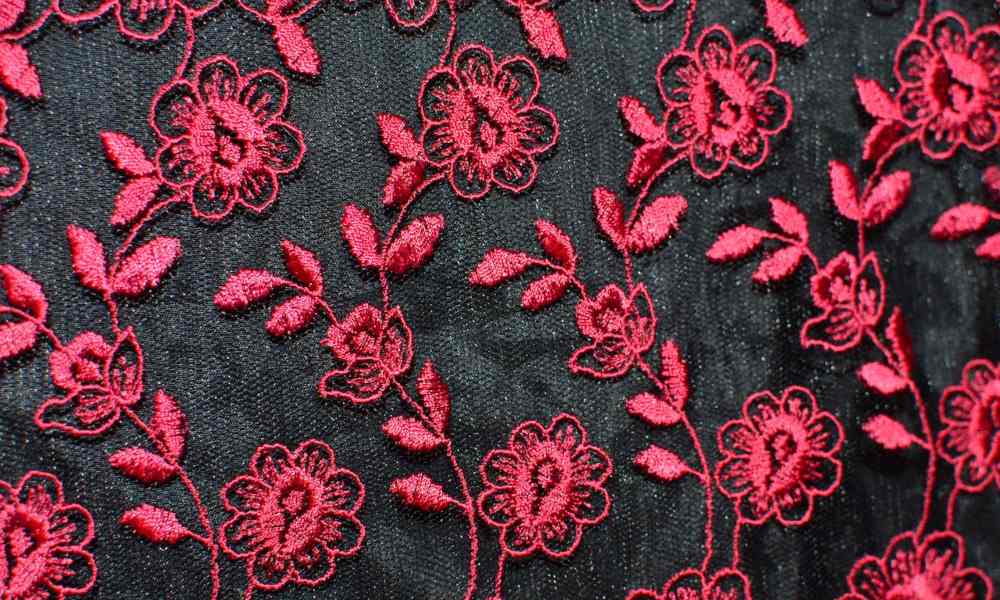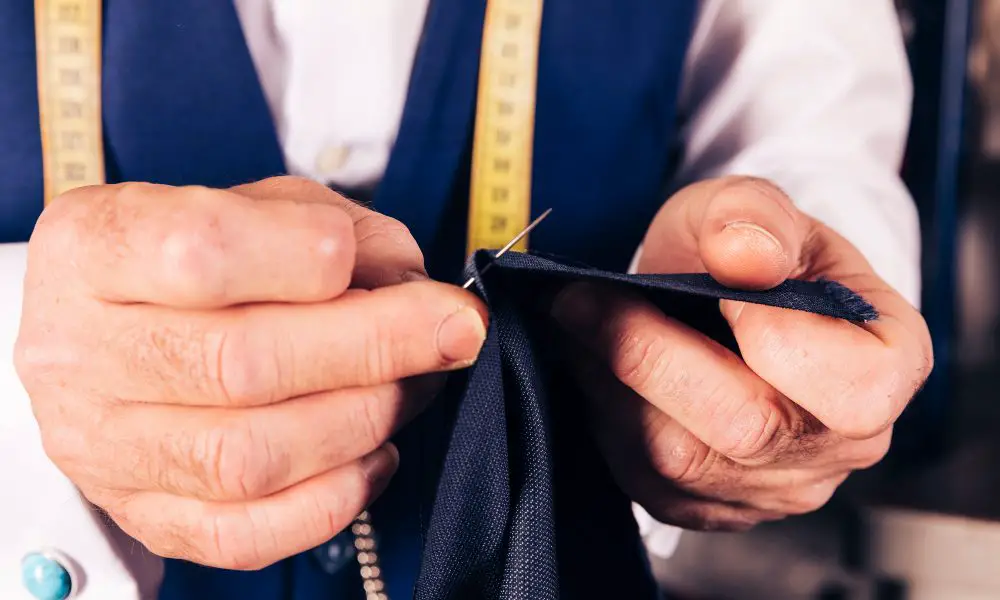Polyester is one of the most popular fabrics for clothing and home décor projects. Its flexibility and resilience make it a popular choice among crafters and sewers. Many individuals in these communities find it to be an excellent option. But can you really embroider polyester fabric successfully or effectively? There are some unique challenges to coloring slippery, stretchy polyester, but some handy tips will set you up for success!
What Exactly Is Polyester Fabric?

Before we dive in, let’s quickly overview what defines polyester fabric. Polyester is a synthetic polymer fabric made from petroleum byproducts. The critical properties of polyester include:
- Non-absorbent surface
- Wrinkle and fade-resistant
- Lightweight and quick-drying
- Stretchy with excellent elasticity
- Prone to static electricity
Polyester is a frequently used material on its own or combined with other synthetic and natural fibers such as cotton and rayon. Blends marry the best qualities of different fabrics.
Why Is Polyester Tricky for Embroidery?

The very characteristics that make polyester such a versatile fabric also cause some difficulties in embroidery. Some primary challenges include:
Slippery Surface
The crisp finish of polyester fabric can cause stabilization issues. Limp fabrics slip and shift while stitching, resulting in distortion.
Static Electricity
The tendency of polyester to cling to itself can impede the embroidery process. This static charge attracts stray threads and fabric pieces under the needle.
High Stretch
While the stretch of knit polyester is desirable for clothing, it can skew and deform embroidery designs beyond recognition!
However, there are solutions for each obstacle when prepping polyester for embroidery.
Handy Tips for Embroidering Polyester
With the right tools and techniques, embroidering polyester can be fun and rewarding! Here are some critical tips for success:
Use the Right Stabilizer
Stabilizers are essential for embroidering polyester’s slippery surface. Opt for thick, sticky options like wash-away stabilizers. This will firmly grip the fabric during stitching while dissolving away afterward.
Choose Stretch Needles
Polyester’s give requires a specialized needle able to pierce it without distortion. Stretch needles have extra deep grooves to avoid skipped stitches in elastic fabrics.
Match the Thread Content
For best results, choose polyester or rayon embroidery threads which have stretch and sheen similar to the base polyester fabric. Cotton threads lack the flexibility for knits.
Adjust Your Settings
Since polyester is a smooth fabric, use lower densities and tighter tension settings to avoid stitch pull compensation issues when hooping.
The Best Polyester Fabrics for Embroidery

While pure polyester can be embroidered carefully, blended fabrics are easiest to stitch. Here are some top options:
Poly-Cotton Blends
A 50/50 to 65/35 cotton/poly blend incorporates polyester’s benefits while cotton minimizes distortion.
Poly-Rayon Knits
Smooth rayon blended with polyester makes for a vibrant, drapey embroidered fabric perfect for apparel.
Sheer Voiles or Chiffons
Delicate sheers shine when embroidered using soluble stabilizers and gentle handling.
In most cases, woven poly blends outperform super stretchy knits. But with proper precautions, even athletic meshes make crafty canvases!
Is Hand Embroidery Realistic on Polyester?
While trickier without a machine’s force for penetration, hand embroidery can produce stunning results on polyester. Consider these tips:
- Use a sharp, size 12 crewel needle with a specially shaped long eye
- Substitute the hoop for an embroidery frame to gently hold the layered fabric taut
- Begin with a simple outline design before filling in details to avoid puckering
Hand embroidery allows great control in maneuvering polyester’s temperamental nature. Take it slow and make small, straight stitches for best outcomes.
Frequently Asked Questions
What’s the best kind of hoop for polyester embroidery?
Plastic hoops grip polyester fabric best. Avoid wooden hoops, which can snag or overstretch the material.
How do I fix mistakes in polyester embroidery?
Carefully snip errant threads with small, sharp embroidery scissors. Avoid pulling on the stitches, which can distort the surrounding fabric.
What designs work best on polyester?
Simple outlines, lettering, and solid fills translate beautifully to polyester’s smooth surface. Avoid high detail or dense designs at first.
Can you embroider polyester clothing?
Yes, but turn the piece inside out first. Use a topping stabilizer to prevent stitches from getting lost on the reverse side. Trim excess stabilizer closely after finishing.
What machine speed should I embroider polyester at?
Since polyester fabric shifts easily, keep your machine at a moderate speed between 500-800 stitches per minute. Slow and steady!
In Summary
Embroidering polyester may take some extra planning, but the effects are well worth it! Bright colors pop against the fabric and washes like a dream. Match your needles, stabilizers, and threads properly to the material and adjust settings as needed. With some testing, polyester can become your new favorite embroidery canvas!
What tips do you swear by for conquering slippery polyester with stitches? Share your best ideas below!
***
Main image: Pexels




